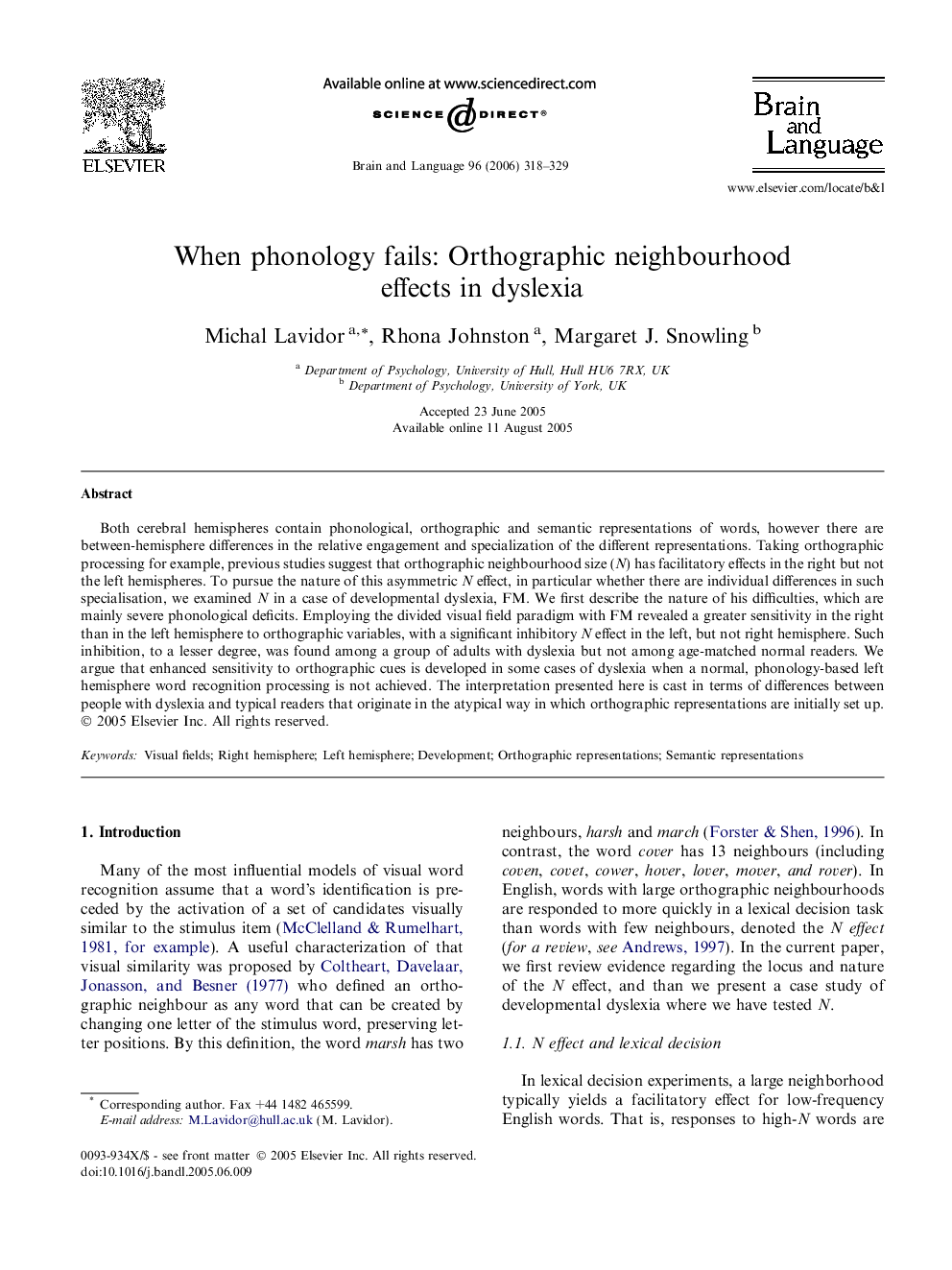| Article ID | Journal | Published Year | Pages | File Type |
|---|---|---|---|---|
| 926303 | Brain and Language | 2006 | 12 Pages |
Both cerebral hemispheres contain phonological, orthographic and semantic representations of words, however there are between-hemisphere differences in the relative engagement and specialization of the different representations. Taking orthographic processing for example, previous studies suggest that orthographic neighbourhood size (N) has facilitatory effects in the right but not the left hemispheres. To pursue the nature of this asymmetric N effect, in particular whether there are individual differences in such specialisation, we examined N in a case of developmental dyslexia, FM. We first describe the nature of his difficulties, which are mainly severe phonological deficits. Employing the divided visual field paradigm with FM revealed a greater sensitivity in the right than in the left hemisphere to orthographic variables, with a significant inhibitory N effect in the left, but not right hemisphere. Such inhibition, to a lesser degree, was found among a group of adults with dyslexia but not among age-matched normal readers. We argue that enhanced sensitivity to orthographic cues is developed in some cases of dyslexia when a normal, phonology-based left hemisphere word recognition processing is not achieved. The interpretation presented here is cast in terms of differences between people with dyslexia and typical readers that originate in the atypical way in which orthographic representations are initially set up.
